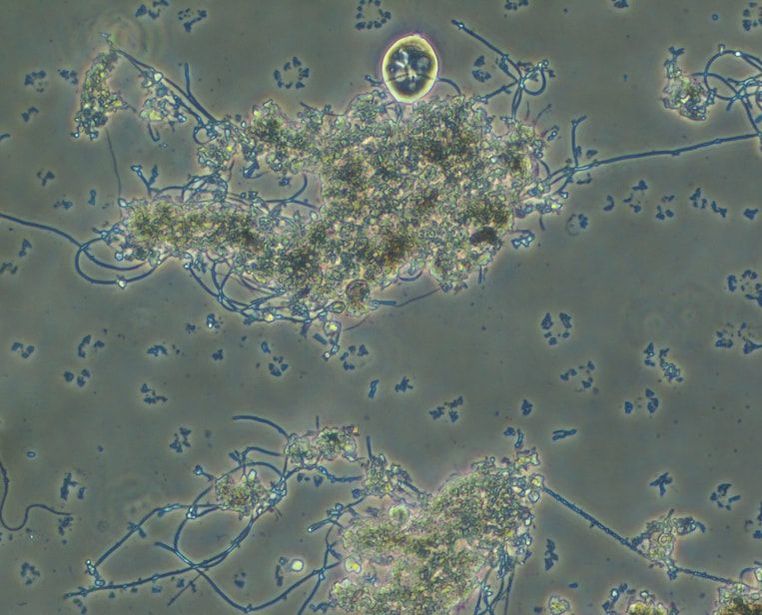- Low Dissolved Oxygen (D.O.)
- High influent soluble BOD & organic acids (causing a zone of highly depressed DO near the influent)
- Sulfides - several filamentous forms can also obtain energy from sulfide oxidation
- Low nitrogen or phosphorus - unbalanced C:N:P ratio
- Grease & Long chain fatty acids - this encourages Nocardia type foaming
Some of the above problems can be fixed which reduces growth conditions favorable for filaments. Consider corrective measures such as:
- Moving more aeration to the inlet area to avoid the DO depression often seen near the influent
- A long term solution is to step-feed influent which prevents DO drop and high concentrations of organic acids (also known as septicity in influent)
- Add nutrients if C:N:P ratio is triggering filaments (they have more surface area to uptake scarce nutrients)
- Adjust F/M or MCRT
- Using hypochlorite, peroxide, or other oxidant to disrupt the filaments. This is only for severe problems. With more surface area, filaments are more susceptible to disinfection than floc forming bacteria. Dosing can be determined by jar testing and looking for filament disruption prior to disinfection of the main system.


 RSS Feed
RSS Feed